Tailoring employed a subtly layered spin at Pitti Uomo this season, forging a multidirectional take on volumes and sartorial hybridisation.
THE RANKS of Italian designers willing to put an extravagant tone to runway presentations are thinning rapidly. This season, there was a new sense of restraint at Pitti Uomo that rebalanced sartorial delicacy with tailored severity: collections are firmly holding a matter-of-fact shape, and those shapes—narrow, linear and deconstructed—hit at the top of the hip with loose hints of cinch or cling, to contrast the structured formality they’ve garnered for seasons.
The fuss-free aestheticism continues to undercut the traditional, decorative propriety of its appeal with a new emphasis on versatility—or, at any rate, the functional suggestion thereof. Structured lines with a sharply cut form were key mainstays, often redefined as jackets or coats over breezy shirting.
While running through the gamut of day and night options, the menswear spotlight strategically placed the tie above the blazer, swooping a neckline under a lapel, or drawing attention to the sweet mix of chromatism.
“Pitti Uomo continues on its path of growth alongside the host of brands, representing a moment for meeting, business and in-depth analysis of the issues for an increasingly large [and strong] community that spans across the contemporary fashion culture,” detailed Raffaello Napoleone, CEO of Pitti Immagine.
“Companies in the fashion industry, also for the coming season, have chosen to focus resources and investments both on Florence and our event, which offers, in turn, international visibility to brands and an ideal and ever-evolving context to meet the right interlocutors,” he said.
In the midst of all of this, this season’s ambition is to clean the slate rolls in one timeless bit of unfussy elegance that melded functionality with discipline, flipping the intellectual equation by working upper-body offerings with something straight and du jour.
Pitti’s version of eclectic, modernist romance assembles a vast pool of references—from quiet luxury to a vibrant attitude—which undercut the richness with a sense of throwaway lightness that makes fashion modern and accessible.
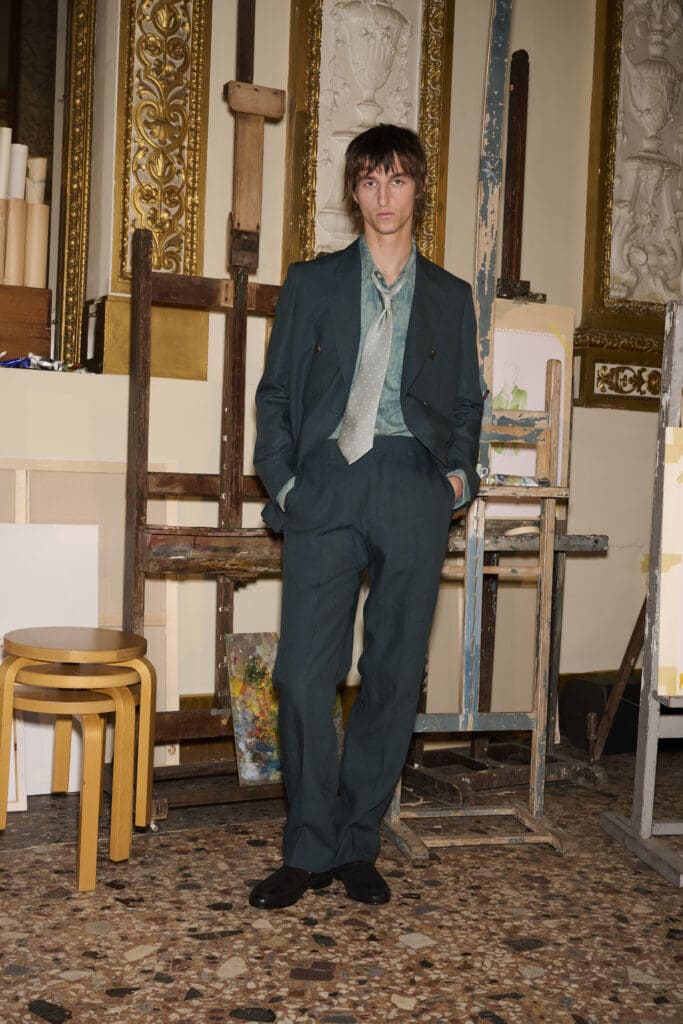
Paul Smith SS25

Paul Smith SS25
Fashion is trending toward easier, more relaxed silhouettes at the moment, and designers like Paul Smith are keying into that, percolating something as simple as an outerwear piece for the day and rendering it haute by covering it in intarsia or finely sculpted motifs for the evening.
“There’s a lot of linen and silk offerings in this collection, which makes the lineup very light to the touch,” Sir Smith offered in a backstage interview about his Spring-Summer 2025 outing. “Moreover, there’s this whole idea of the cafe teamed with the arts which were increasingly present in 1960s Italy, a time I experienced first-hand back in the day,” he continues.

Paul Smith SS25
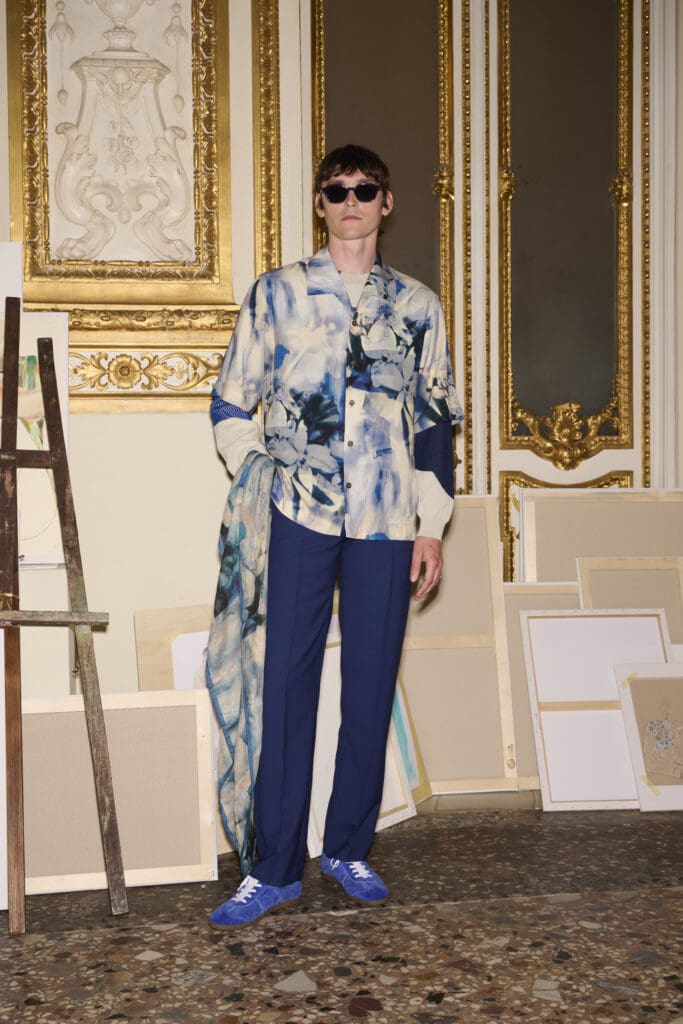
Paul Smith SS25
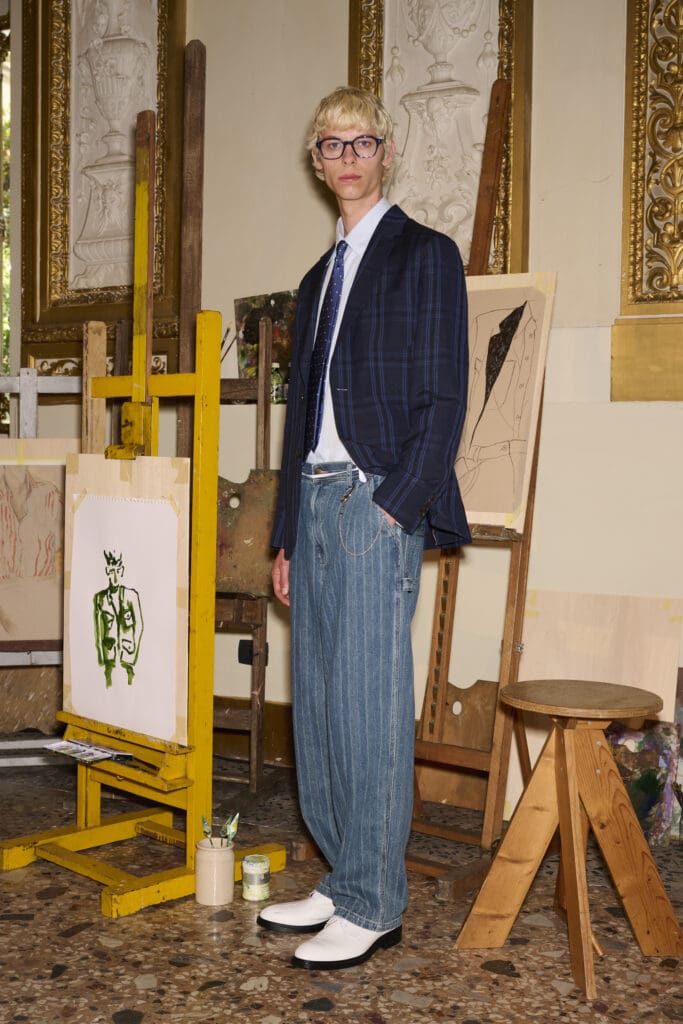
Paul Smith SS25
Nestled in the sumptuous settings of Villa Favard, a 19th-century treasure trove in the heart of Florence known for its frescoes and towering proportions, Paul Smith’s collection paid homage to the Italian cafes that the designer frequented in Soho in the 1960s. “Typically open all night, these cafes were a place for people to go after the likes of the Scene Club, Flamingo Club, and Whiskey-A-Go-Go had closed for the evening,” he opined backstage.
The collection expands upon this theme, with an alluringly louche and soft approach to the house’s timeless classic: On one side, ties are worn loosely knotted, paired with denim jackets and unstructured blazers in cotton canvas; on the other, suits are cut from classic houndstooth and Prince of Wales fabrics, reminiscing a retro-minded Britishness while serving outerwear that uses bold statement fabrics with an eye-catching effect.
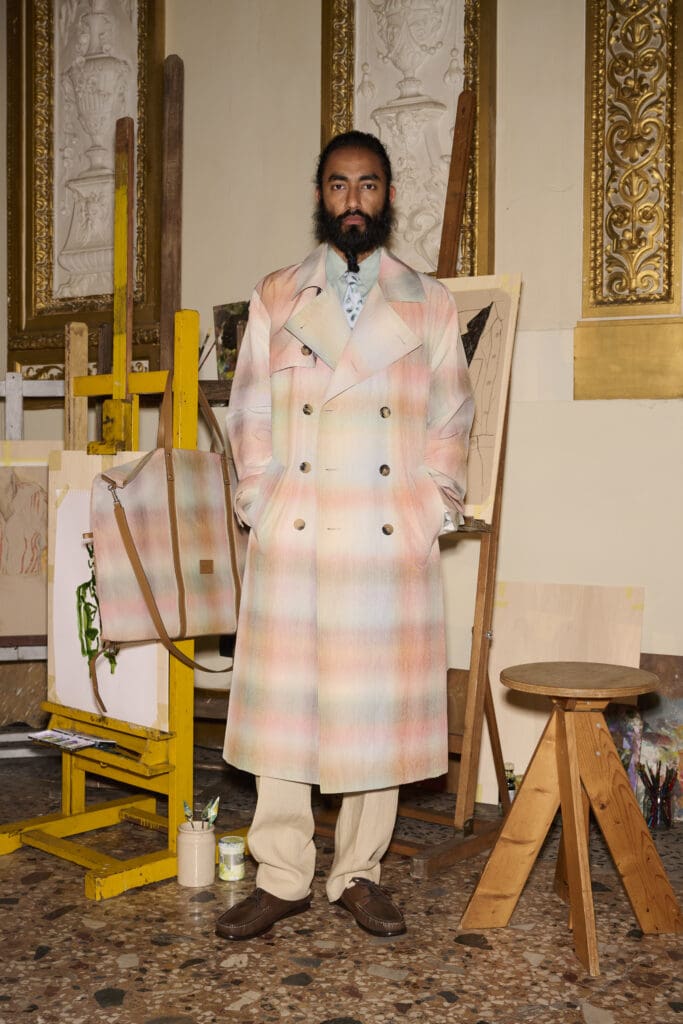
Paul Smith SS25
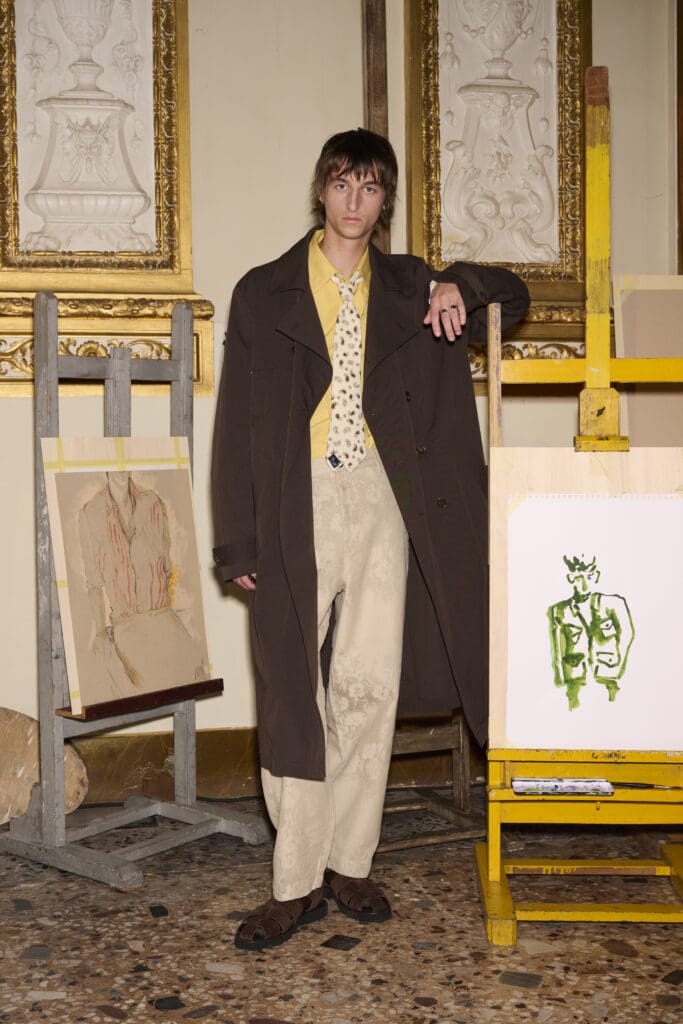
Paul Smith SS25
As for the clothes, standouts comprised classic trench coats in mint green linen, a patterned suit double-breasted viscose and a gorgeous slew of neutrals that juxtaposed pastel hues.
The presentation was an opportunity to announce an exciting new project coming in early 2025: a partnership with Lee. “In the early 1970s, I began importing painter’s pants by Lee to sell in my very first shop in Nottingham,” Sir Smith noted. “That connection now comes with a wide-ranging capsule of printed denim, jacquard trousers, woven tops, and tees.”

Brunello Cucinelli SS25

Brunello Cucinelli SS25
On similar territory, Brunello Cucinelli’s latest spring outing nodded to the care of style and its nonchalant instinct, presented through a great mix of tasteful colours. The palette ranges from delicate pastels of grapefruit, papaya and ginger acting as neutrals.
Natural fibres are the key elements of the collection, with silk, in particular, playing a leading role: pure or in precious blends, always with a matte effect, even in unusual elements such as outerwear or denim fabrics.
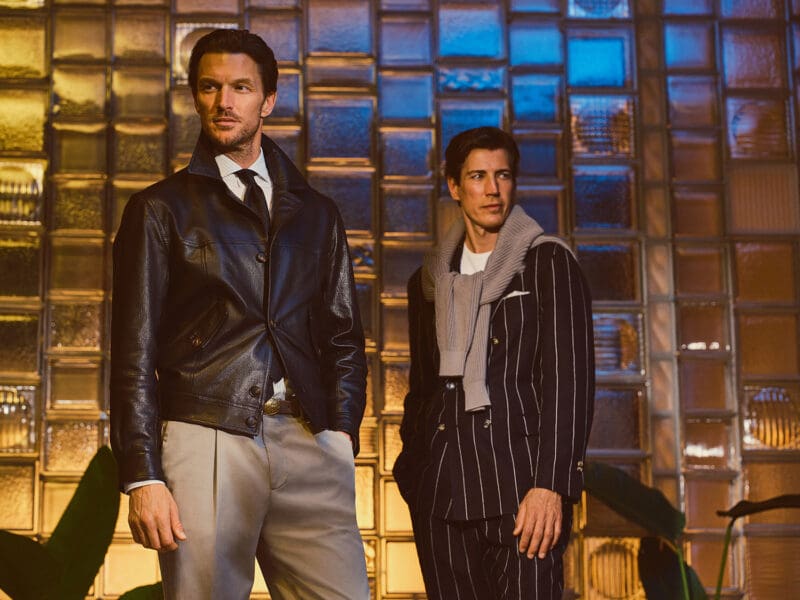
Brunello Cucinelli SS25
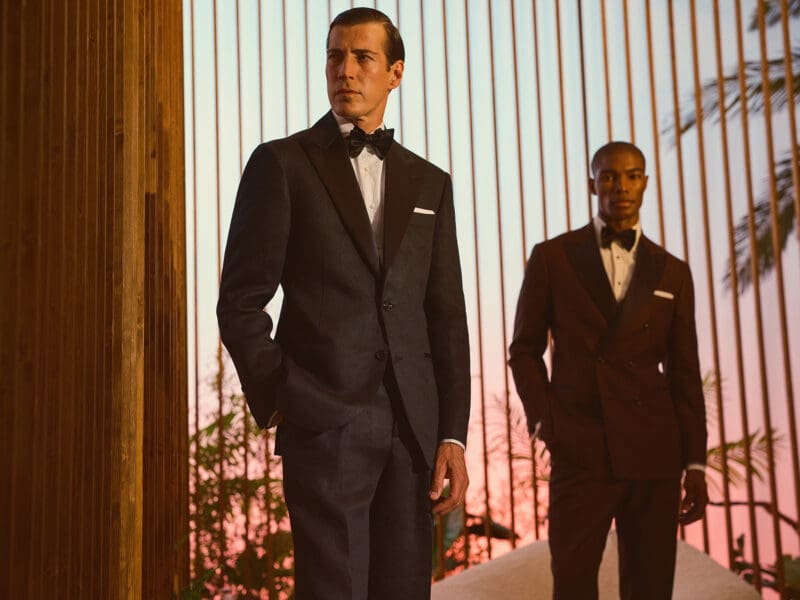
Brunello Cucinelli SS25
Summer outerwear takes on a more technical character, with wide volumes reminiscent of the 1980s, or the use of precious fabrics from the world of tailoring, made high-performance with membranes and finishes that increase protection. A new fine cashmere and linen yarn introduces sophisticated colours in lighter knits, while striped patterns create delicate accords with panama, beige and grey tones that have a sustainable vein.
The renewed attention to circularity continues apace, and this season the Kering Material Innovation Lab and the Pitti Discovery Foundation support emerging designers with an ethically-driven approach to craftsmanship for the second season. As the Kering MIL operates as an internal research facility of the Kering Group–which, in turn, focuses on minimising the environmental footprint of its brands by pioneering the transition towards a sustainable supply chain—S|Style’s relevance in the sustainable fashion spectrum becomes increasingly commonplace.
“This year we once again partnered with Kering MIL, which fetches sustainable materials and presents them to brands,” Giorgia Cantarini, Chief Curator of the S|Style project, told GLASS. “What [Kering] did with S|Style is based on my selection of 10 designers: They assigned materials and innovations that are sustainable so that they could create a look to present here at Pitti,” she said.
Here at Pitti, these brands showed 10 looks, and each one of them has specific different materials: the concept is circular luxury, every material is either recycled or regenerated and we thought about luxury because these materials are of such high quality that can be compared with virgin materials and first-worn kinds,” Cantarini said.
As the market of circular economy continues to grapple with systemic downturns for the smaller brands, the bigger segment of luxury needs to rethink its strategy. “In order to garner a circular economy and a sustainable approach, I believe everything needs to start from these big brands and groups because if they refrain from making their resources available, there will be no change for the near future.”
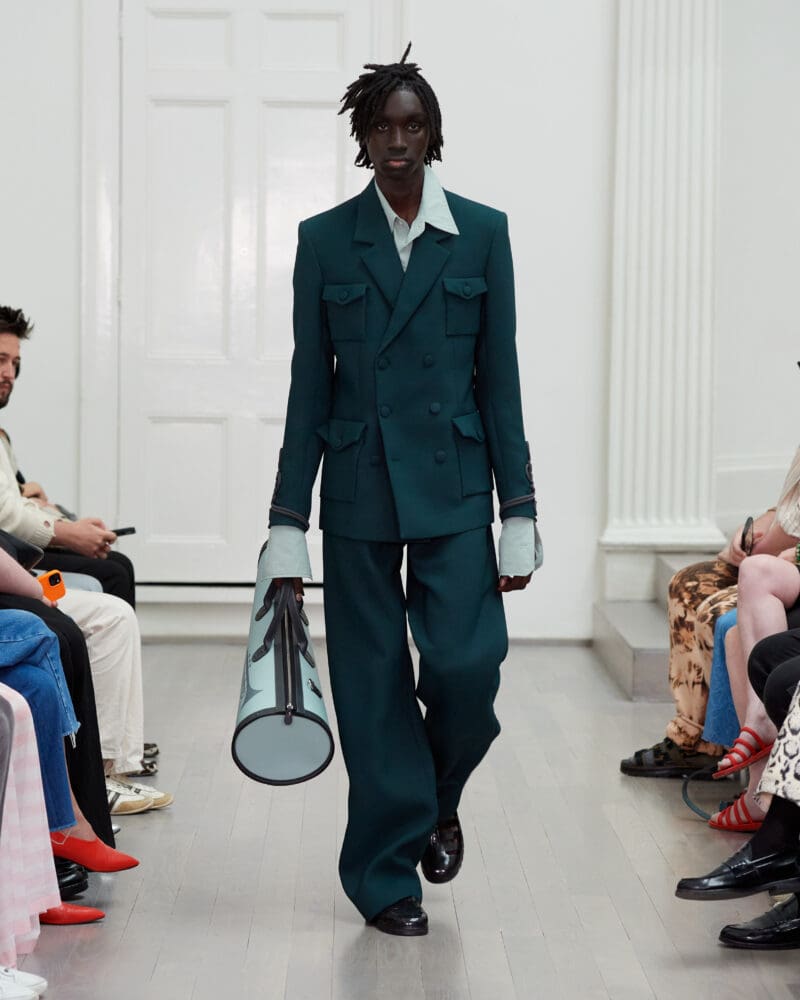
Denzilpatrick SS25
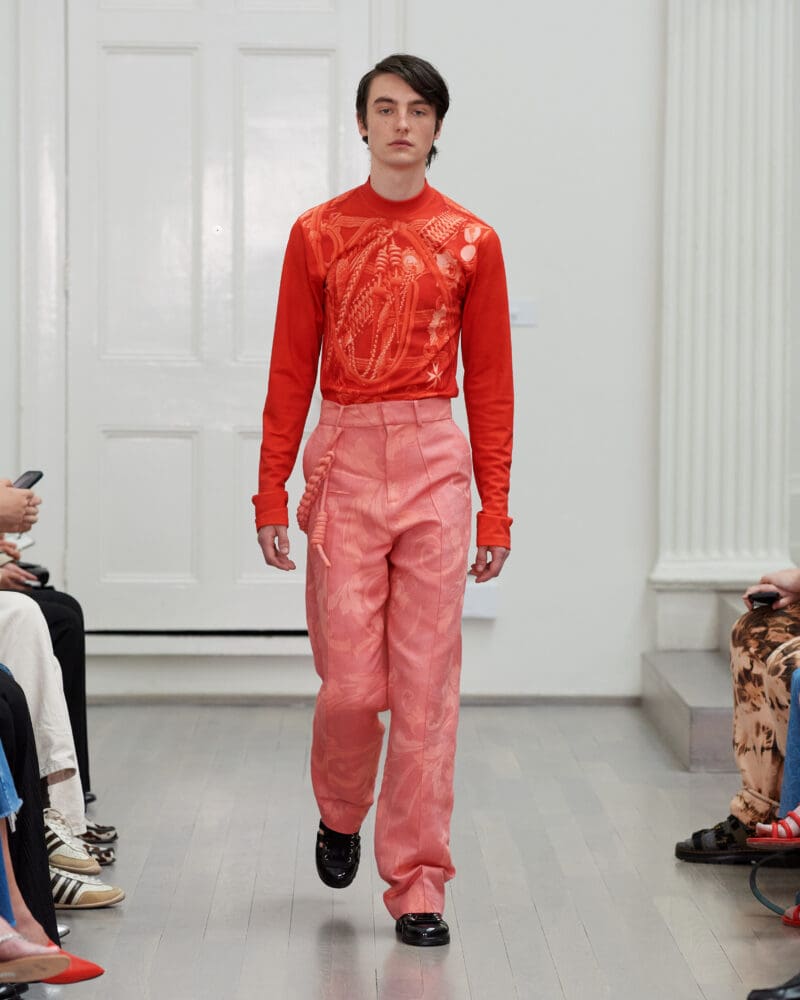
Denzilpatrick SS25
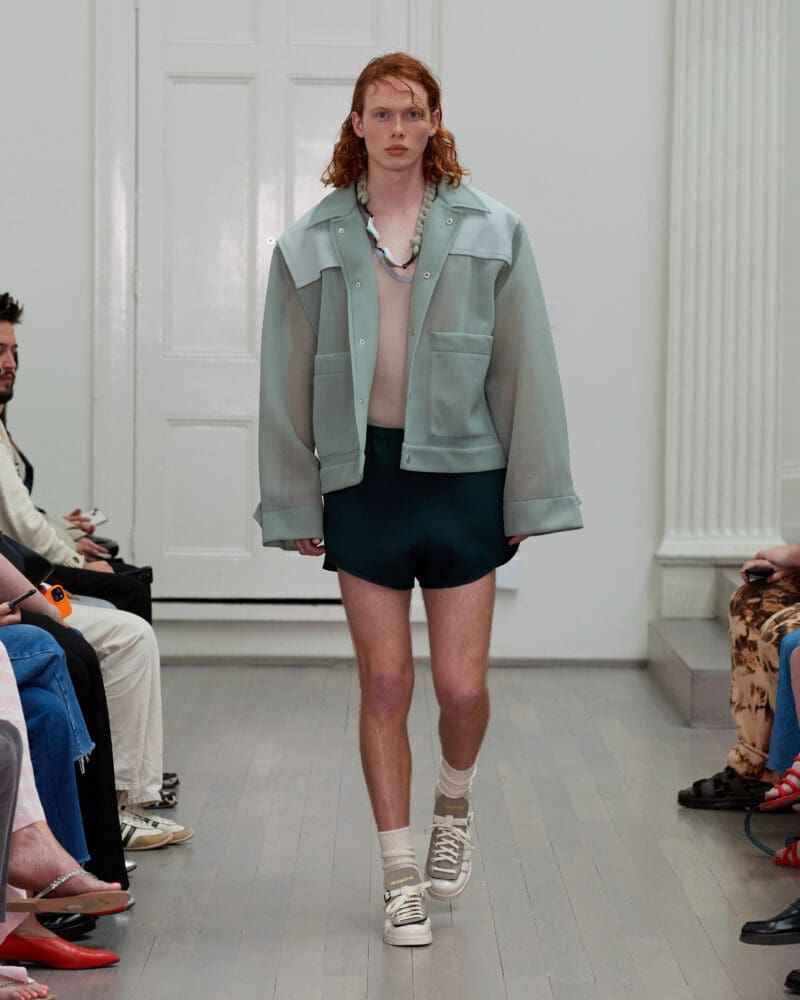
Denzilpatrick SS25
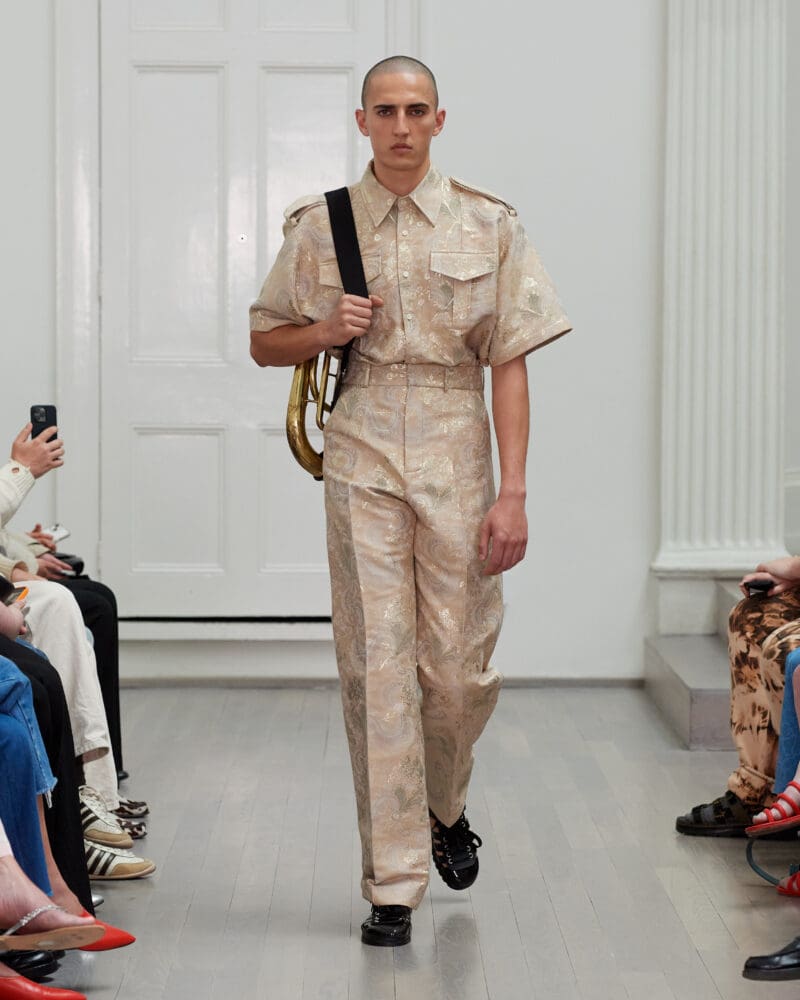
Denzilpatrick SS25
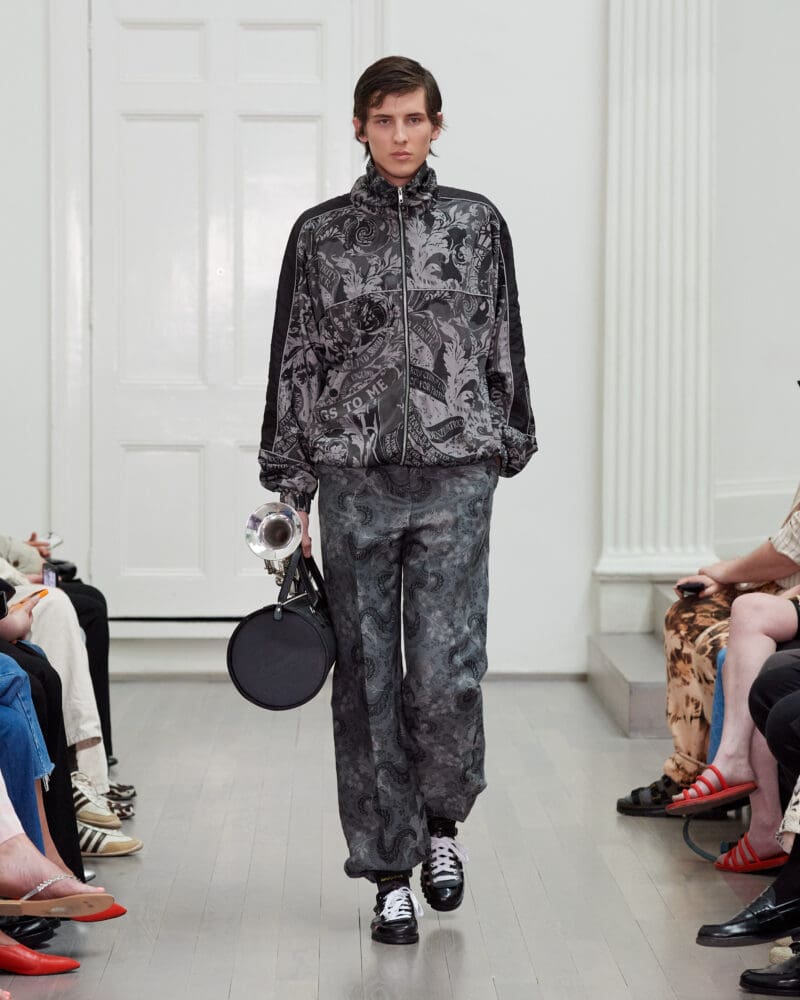
Denzilpatrick SS25
Contacted back in March 2024, Denzilpatrick’s design duo are positive about the collaboration and what’s forthcoming for the label. “As a brand, we source sustainability in every sense but for this opportunity, the immediate challenge was the light fabric given to us, which juxtaposes the harder workwear textile that we were using to fashion our current collection,” the duo said.
For Spring, Daniel & James British took club uniforms into a post-practice, summer state of mind, with uniform tailoring brought out into the fresh air and sunlight; Iconic donkey jackets, stay-pressed trousers and shirts, and the ever-present knitted singlet become super-light and layered and tracksuits are lifted with fresh, delicate fabrics, as we step out with London pride.
“We want to ensure that there’s always some ease tossed in the garments,” they told GLASS. Silk linings, draped shirts and modern twin sets form emblematic textiles that are repurposed for the poolside with military trimmings crafted as soft-play summer accessories.
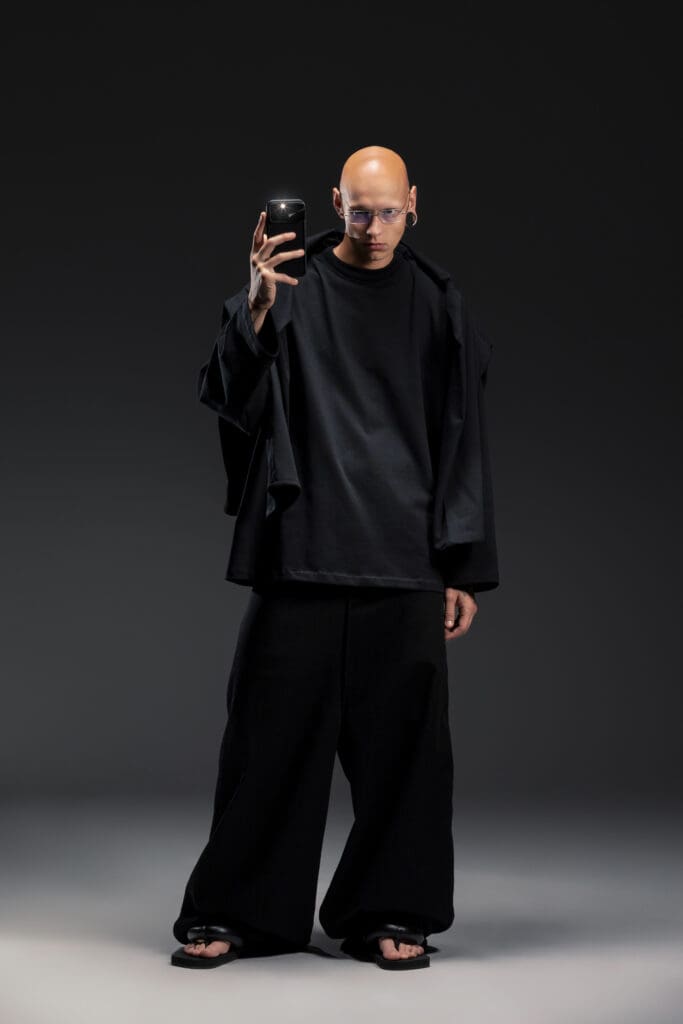
Domenico Orefice SS25
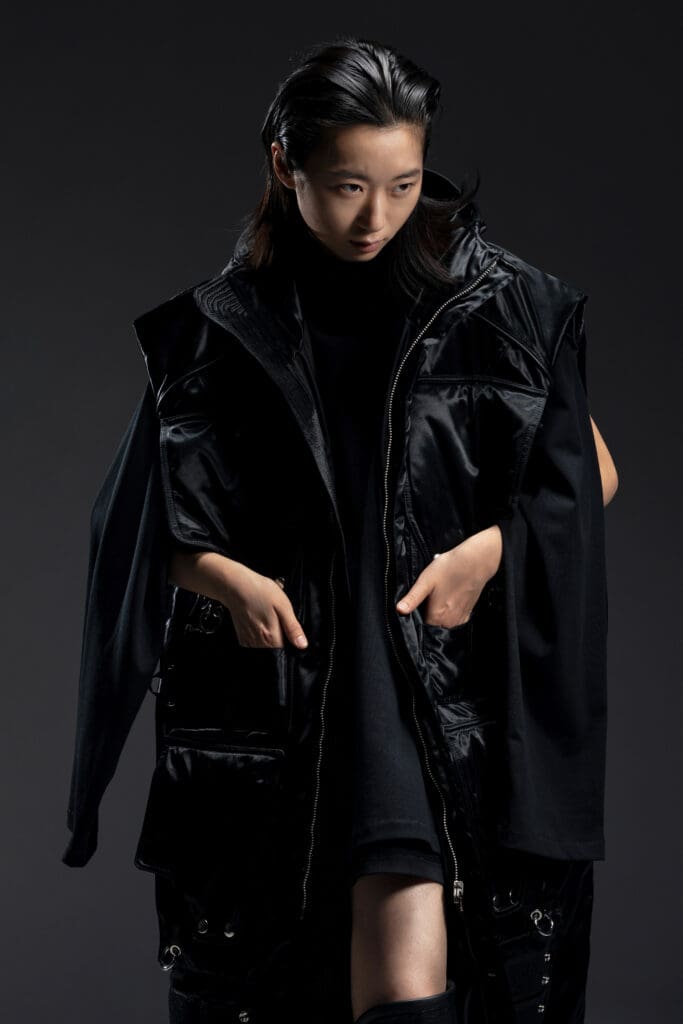
Domenico Orefice SS25

Domenico Orefice SS25

Domenico Orefice SS25
On the flip side, designer Domenico Orefice (who also took part in this year’s S|Style) took practicality to new heights, toying with black and volumes in equal measure. “Working with these new textiles has been a great challenge since I work a lot with hefty volumes and shape—but the eclectic mix of materials I got to use was a great way to achieve the silhouette I had in mind, which fully reflects my creative practice.”

Buzigahill SS25
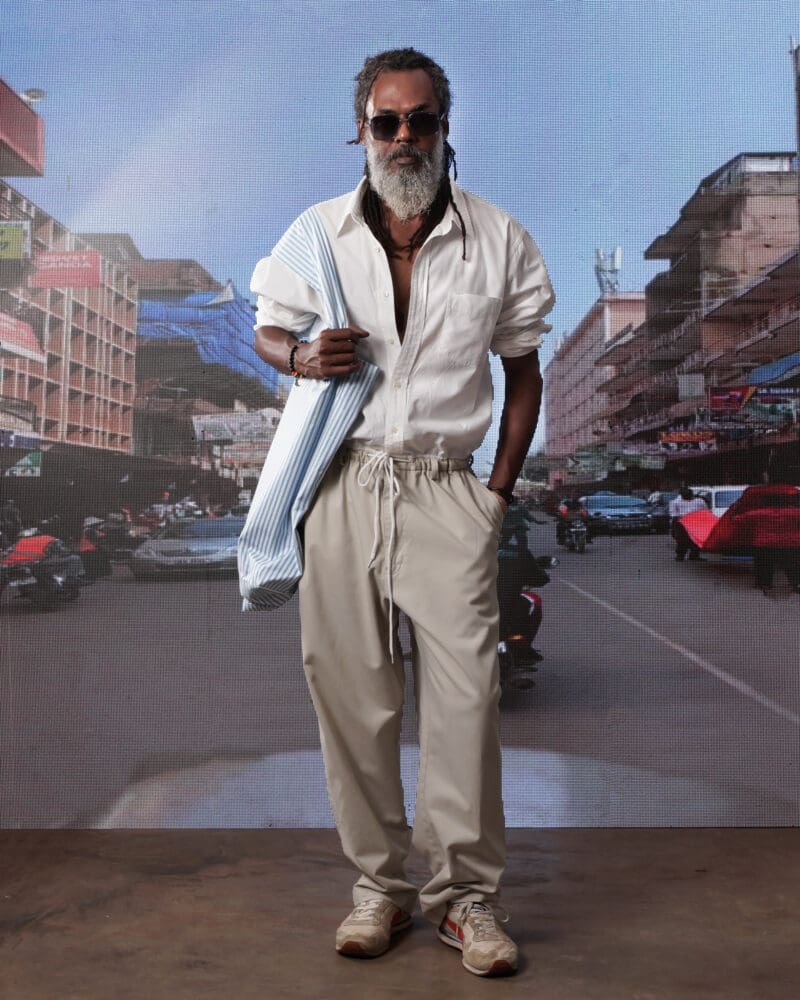
Buzigahill SS25
Based in Kampala, Uganda, Bobby Kolade’s latest collection for Buzigahill “Return to Sender” is epitomised by second-hand clothing. “80 percent of my textiles are used and worn in Uganda,” he explains, adding how “Our local textile industry has been completely suffocated by second-hand clothing, which is a problem for the country’s growth and fashion economy; so this project and my brand is really all about a response to this situation. It’s a polite middle finger, a conversation and a dialogue that wants to create value.”
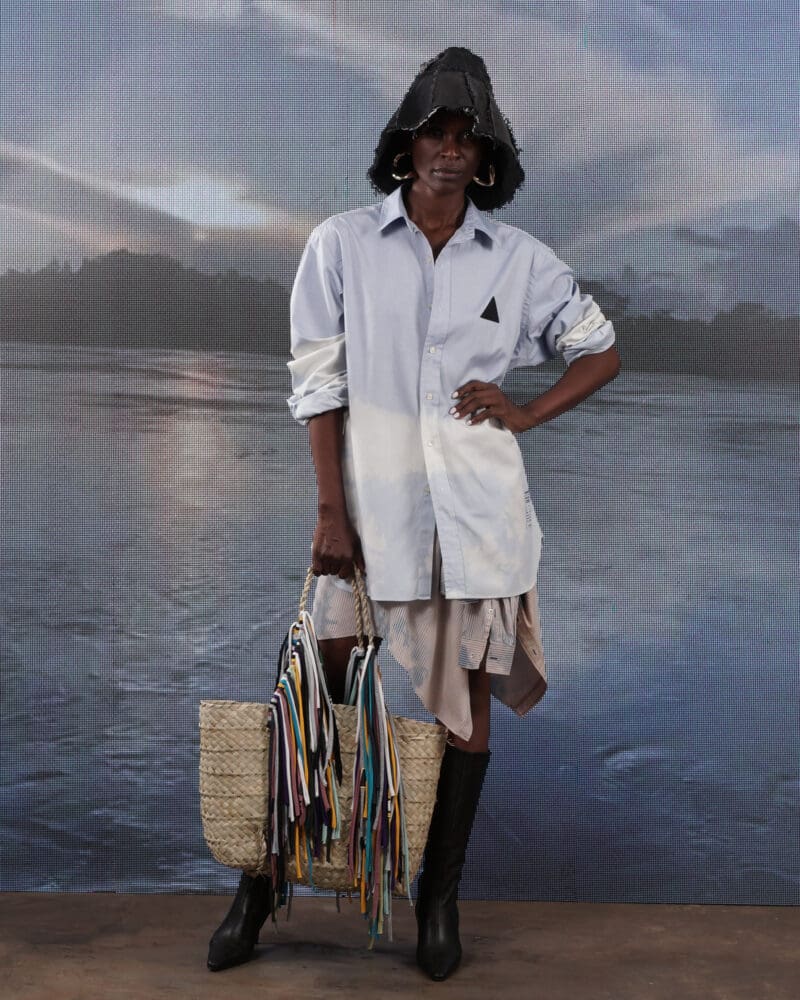
Buzigahill SS25

Buzigahill SS25
Keeping the sustainability conversation afloat is the Scandinavian Manifesto pavilion at Pitti, which has been forging a path for innovative research from the Nordic scene for a host of seasons. This edition reconfirms the partnership with CIFF, the premium trade fair platform for Scandinavian brands in Copenhagen.
“We’ve been doing this for many seasons, but we’re now focused on the opinions of the buyers who really like the Scandinavian manifesto and the collections on deck,” said Sofie Dolva, Director at CIFF (Copenhagen International Fashion Fair). “We wanted to have a broad tone this season, and we chose to include brands representing not only fashion, but also dipping into the segment of accessories to make the layout more airy while including established names like ARKK Copenhagen or Henrik Vibskov as well as their emerging counterparts, too.”
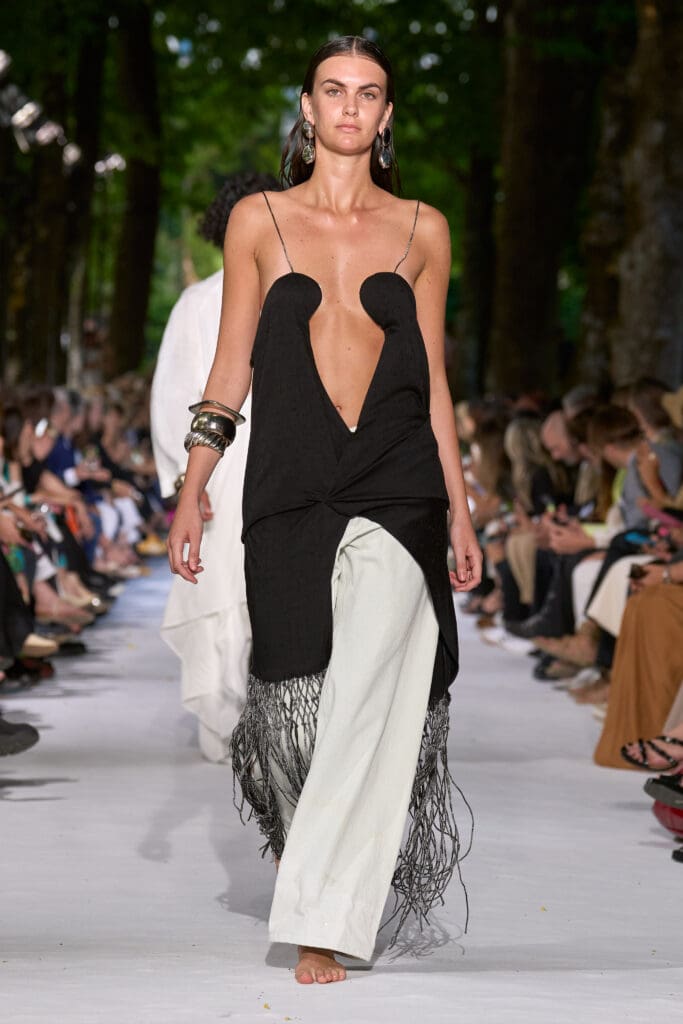
Maiken Stella Roslund at Polimada
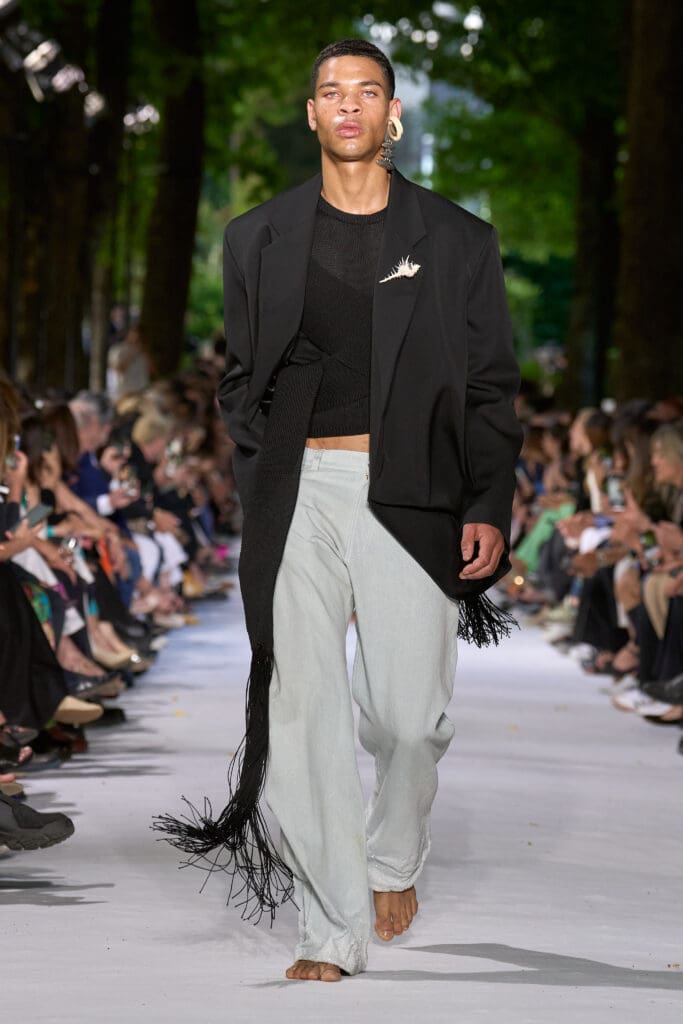
Maiken Stella Roslund at Polimada
Speaking of emerging talents and innovation, Polimoda’s annual graduate show is a case in point: focused on the theme of metamorphosis as a way to show evolution and transformation, it’s a concept that epitomises the pinnacle of creativity, reflecting the academic design experience at Polimoda and presenting the world with a preview of the future of fashion and its pioneers.
“Metamorphosis is one of nature’s most fascinating processes, symbolising the transformation from one form or substance to another, giving rise to new life or expression,” explained Massimo Giornetti in the notes, Polimoda’s Director. “This vital and universal cycle is evident in all human and natural processes. Transformation, an essential element of the creative journey, has always inspired designers, artists, philosophers and thinkers.”
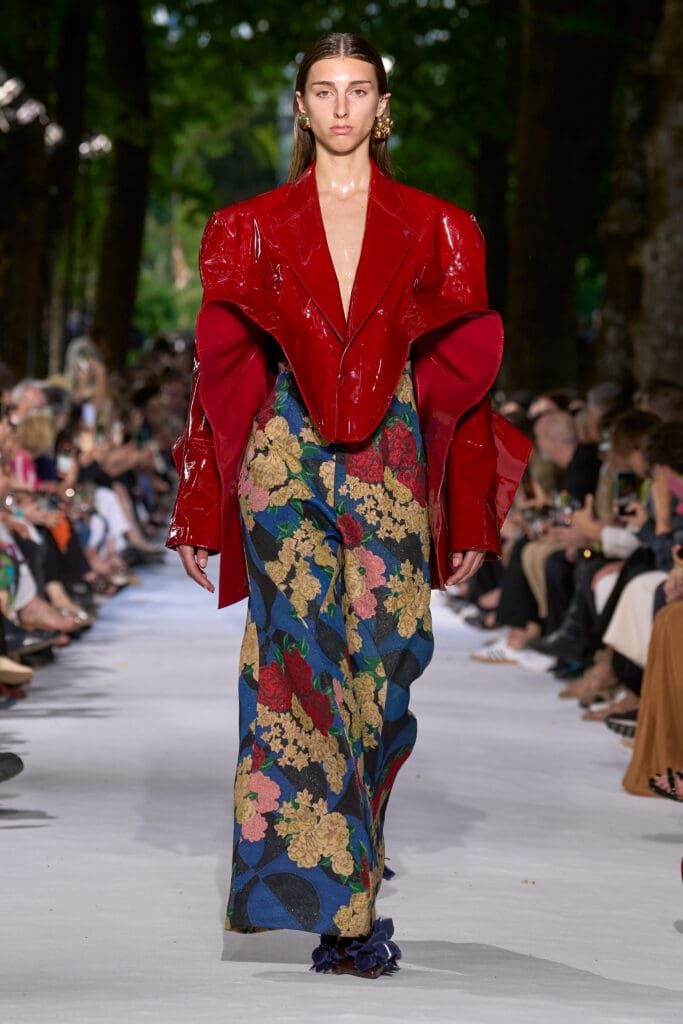
Takuya Nishibori at Polimoda
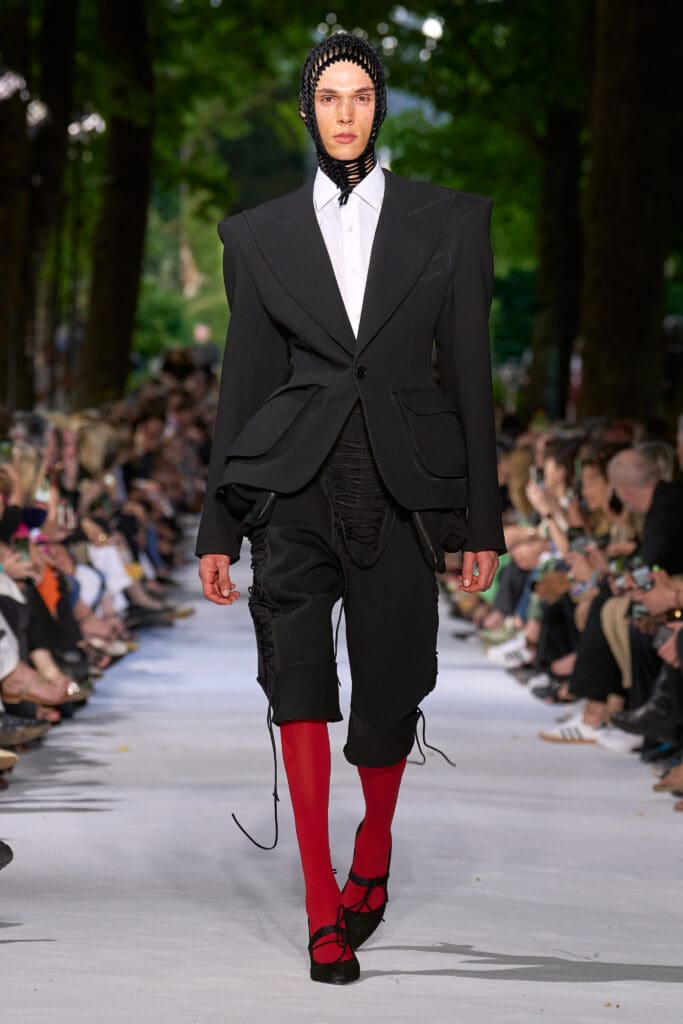
Noè Falchi at Polimoda
The ever-evolving tides of change were forceful proponents of vibrant attire at Pierre-Louis Mascia’s Spring outing, for which he paid tribute to fashion as a form of philosophy, referencing Kandinsky’s oeuvre within his garments.
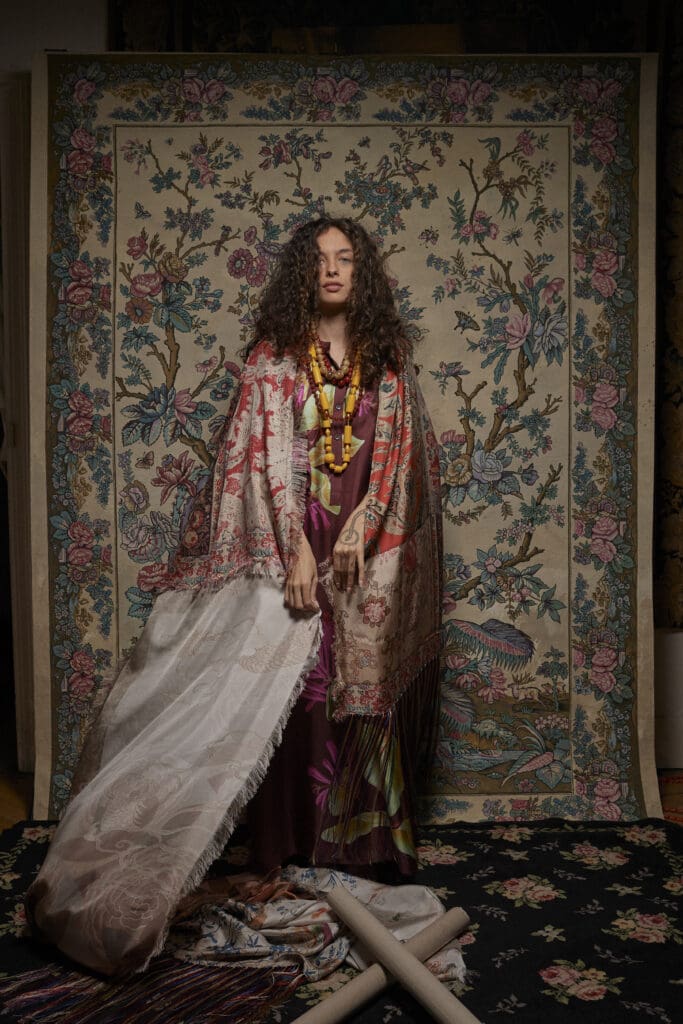
Pierre-Louis Mascia SS25
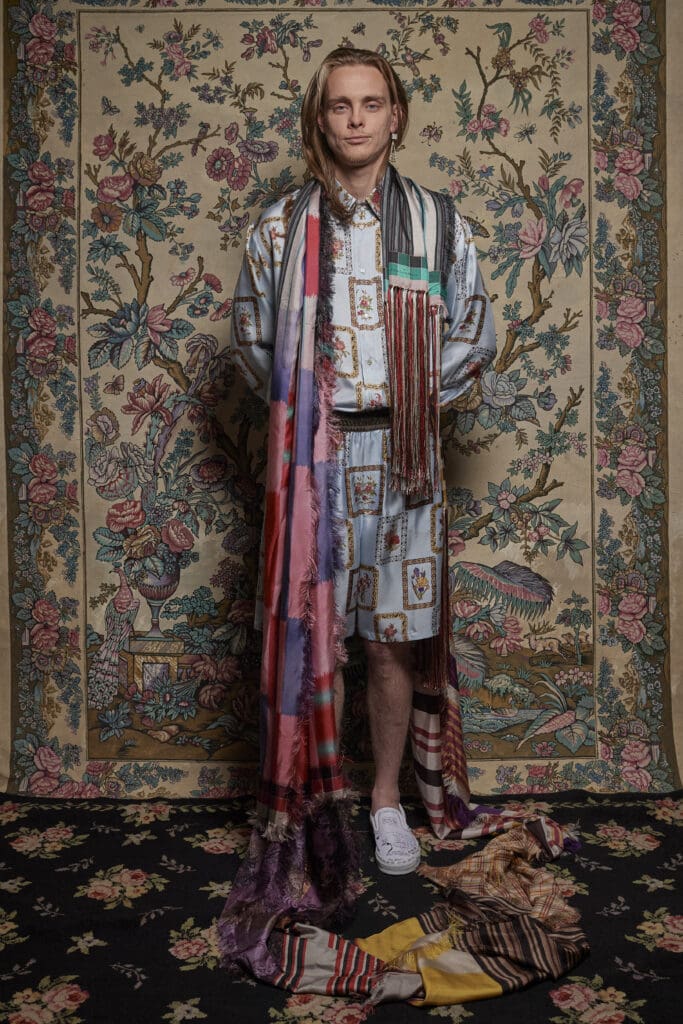
Pierre-Louis Mascia SS25

Pierre-Louis Mascia SS25
The brand presented its first fashion show after more than 15 years of designing collections, envisioning art school students invading the stage, with their palettes, brushes and creative personalities. A burst of colour, beads, and prints rule supreme: pure graphics alongside flowers, trees of life, and geometric patterns. There are gradients, délavé, and always references to that sparkling East, to the clash between red and orange that Yves Saint Laurent’s work continues to inspire, over and over again.
by Chidozie Obasi
